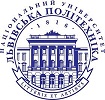
Since 1961 the military was housed in the Baden residence. It is difficult to say who owns the building now, there are still some property disputes, although the city seems to have got the palace on its balance sheet. There were even ideas of setting up a branch of the Lviv Art Gallery here but no further actions were done
History of the building
Since the second half of the 18th century, extensive Busk estates (from Kamianka-Buzka to Radekhiv!) belonged to the Mier FamilyIn 1798, Józef Mier (1730-1808) gave the Busk key to his son from his first marriage to Anastasia of Bogusz, the writer and businessman Wojciech Mier (1757-1831). Wojciech and his wife, the Austrian Countess Caroline Weissenwolf, settled in Busk, built a magnificent residence there
After Wojciech's death, the Busk estate was bought by his cousin, the Austrian diplomat Felix Mier (1776-1857). One of Felix's sons, Henrik (1829-1879), lived permanently in Busk and left the palace to his wife, the former Lviv actress Anna of Wierer. And it was the former actress, leaving a small rent from the estate, gave the entire inheritance of her husband to his nephews Casimir and Stanislav Baden, sons of Cecilia Mier.
Thus Busk received Kazimir Badeni (1846-1909), the future leader of the Conservative Galician Party, the governor of Galicia and prime minister of Austria-Hungary. From 1886 he lived permanently in the city and gladly managed the estate. Then, however, his political career tore him away from the Galician mistress. Casimir returned to his beloved Busk at the end of his life, after finishing his political work in the last years of the 19th century. After him, the city passed to his son Ludwig Joseph (1873-1916). After his death, his wife, the Swede Alicia Elizabeth Ancarcron (Ancarcron, 1889-?) married for the second time to Archduke Karl Olbracht Habsburg of Lorraine (1888-1951) in 1920, a colonel in the Polish army.
The next owner of the place was the son of the Prince of Lorraine from his first marriage - Casimir Stanislav Badeni (1912 -?), who after the First World War joined the Dominican Order.
(Tetiana Zhovtanetska, Lviv Polytechnic National University, 2022)